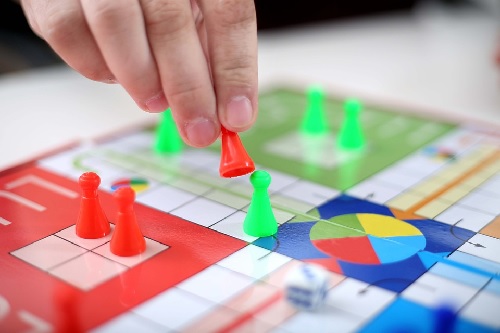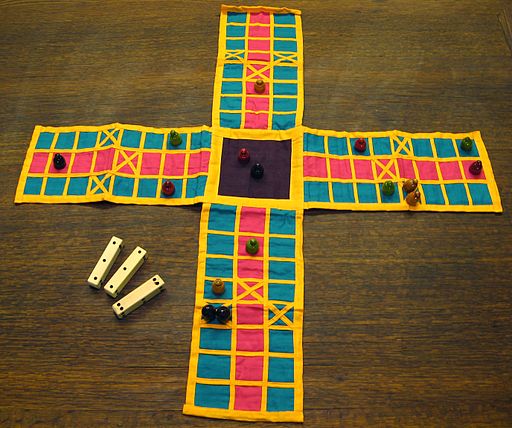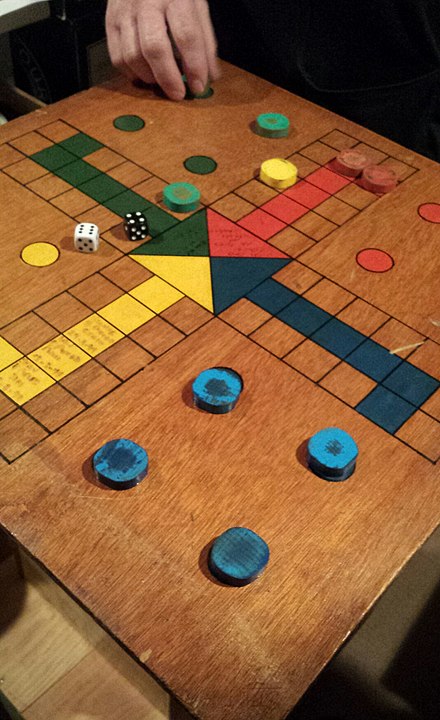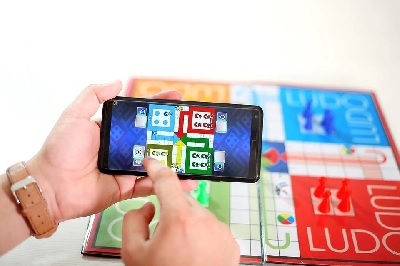History and Facts of Ludo Game {Updated 2024}
Written by Manya Pandey
Did you know that Ludo originated in India?
Written by Manya Pandey, a first-year undergraduate student.
Ludo history is of interest to many people who love the game. Those who like to play ludo wants to know more about the facts and history of ludo game – so here’s all about it.
Ludo is one of the most popular games in Indian households and – it was one of the most downloaded games during the COVID lockdown in India, surpassing even global favourites such as PUBG and Fortnite!
Did you know modern ludo was created during the late Victorian era?
With a game as simple as ludo, you wouldn’t expect much complex history behind it, but it’s actually a simpler version of a very old Indian game known as Pachisi. So, let’s know more information about ludo.
Interestingly, Pachisi is closely related to the infamous game of Chausar, played in the Mahabharata (more about this in the history of ludo section below).
A quick look at how to play Ludo

Ludo is a multiplayer game which could originally accommodate only four players but lately, a lot of apps and online versions offer six to eight-player options. Fundamentally it’s a dice game in which each player’s token is marked with a different colour, typically red, blue, yellow or green.
Ludo’s objective is to send all four tokens to the winning square or home, which is in the centre of the game. The fun part about the game lies in beating each other’s tokens and locking them back in their owner’s yard or their coloured spaces. In most popular versions, the game opens with a roll of six or one.
Let’s shed some light on the rules of ludo.
Rules on how to play Ludo

1. The ludo pieces in ludo only move in the forward direction on the board.
2. Payers alternate turns in a clockwise direction.
3. To enter a token into play from its yard to its starting square, a player must roll a six or one.
4. If an opponent’s token is blocking the pathway, you may roll the dice for the right digits to land on the same space and capture the token.
5. Every player who rolls a six earns a “bonus” roll. If the bonus roll results in a six again, the player again gets to roll.
6. third time is not the charm, because, in ludo, three sixes in a row are termed invalid
7. You can fortify your defences by doubling on your tokens and forming a “block” which means if two of your tokens stand in the same space, no opponent can capture them till they are stacked on top of each other.
8. Each captured token goes back to its owner’s yard and can only be re-entered into the game when the owner rolls a six.
That is how to play ludo. Next up is a short history lesson which will cover
- A short history of Ludo
- Founder of the game
- Evolution of ludo board
- 10 Facts About ludo
Why play Ludo?
On the surface, ludo looks like a game of chance, but it’s a strategy-oriented game promoteing critical thinking and spatial reasoning. Let’s read on to get know more about ludo game.
The dice may award unwarranted digits but each move is in the player’s hands, the choice to capture an opponent or to stand on a safe square depends entirely on the individual.
In fact, African ludo has a lot of additional rules that increase the difficulty levels of the game. We have discussed such interesting global variations in a later section covering some fun facts about ludo.
Games like ludo involve consideration of unknowns in one’s blueprint. Ludo can be a great method to intercept the art of war, which is probably why Mughal emperors such as Akbar the great loved the game so much.
Learn more about it here in the history of the Ludo game.
History of Ludo
Ludo history tells is that the game originated in Ancient India.
Historians are not sure about how much older than Akbar the game of Ludo is. It is said that some of the features etc seem to have existed in India as long back as the third millennium B.C.
In a way, Ludo has been present throughout Indian history – because some variant of the game has been at the centre of each era.
Chaupar or Chausar
This game (which sort of resembles Ludo) was played with sixteen pieces, three dice, and a cross-shaped cloth board – that looked like this (note, this uses three long dice)

There are some other references to the game of Chaupar that are seen in the 19th and 20th centuries.
What’s interesting to note is the fact that Chausar was played with long dice (even stick dice) – these were more common in South and Southeast Asia. It was not played with the cubical dice.
Did you know that Ludo is also one of the many games prohibited by Buddha?
He didn’t specifically ban ludo per se, but had an objection to games involving throwing dice. He probably considered such follies a cause of “negligence”.
The word goes that Mughal emperors, especially Akbar, were fond of an older version called Pachisi which used people instead of shells or pieces to play the game!
In fact, it’s rumoured that the emperor had special rooms tiled with the ludo patterns in their forts around north India. It’s no secret that a version of this household game, Chausar, led to the greatest of all wars, Mahabharata.
How was Pachisi different from Chausar?
Pachisi is often called a poor man’s Chaupar.
This is because it was traditionally played with cowries (or, kaurii) – small shells used by very poor people as money. It was not played with stick dice.

Historians have studied the equipment used in playing Chaupar and pachisi and found that both the men (used as pawns) and the long dice and the cowries (for Chaupar and Pachisi respectively) go back to the third millennium B.C.

Some historians, however, believe that Ludo’s ancestor Pachisi was created around the sixth century CE, and found it painted in the caves of Ellora, Maharashtra.
The first patent in the History of Ludo.
Pachisi, the ancestor of ludo was played with two or three elongated dice which were modified by an Englishman named Alfred Collier. He introduced a cubical die with a cup and registered the first-ever patent in the history of ludo. His version of the game was called “the royal Ludo” and he set forth to patent it in England in 1896. Later the game of ludo was then taken by the Royal Navy and converted into the board game known as Uckers.

The history of ludo has come a great way. From a game that was played on cloth, slate and boards using seeds, shells or dice, it has now been developed into mobile games.
The game can now be played with friends and family from anywhere in the world at anytime. One can say, out of all traditional Indian games, ludo has seen the biggest technological acceleration.
The Ludo board
The board that we know now, didn’t always look like this and neither was it always a handy patterned wood or cardboard. The board has evolved throughout the history of ludo although not as much as the dice did. In older versions, long rectangular dice were used in place of the tiny cubicle and a box that is much more popular now.
A short history of Ludo can be traced through its board. The predecessor of ludo, Pachisi was played on a cross and circle pattern. The Pachisi was played on a cloth and home spaces were absent.
The Ludo board offers home columns or space to each player and is segregated into four colours (usually yellow, green, red, and blue ). Each home column is segregated with equidistant cross-shaped play spaces that are divided into small arms with six squares each. The centre of the board features a large finishing square, often composed of four coloured triangles indicating each player’s exit.
The founder of Ludo
Just like most ancient games, there is no officially recognised founder of ludo because of its long and varied history. There isn’t necessarily a shortage of information, but there do exist big gaps. Also, there are so many versions of the same game that nothing could actually be said about who and did it all began.
Facts about Ludo records
1. The largest Ludo board game was 11.20 m (36 ft 8.9 in) long and 11.20 m (36 ft 8.9 in) wide
This Guinness record was achieved by a group of six project management students from Offenburg University, Germany on 25 May 2019. Interestingly enough, this attempt was set as a task by their professor as part of their course!
2. A record-breaking number of 418 people played Ludo and its ancient version Pachisi simultaneously.
Such a record was established by Primary students of the National Drama School in Greece on 16 April 2019.
3. The online Ludo dice roll is completely random

Digital dice are often accused of being pre-programmed but it’s run by an algorithm (some computer-coded instructions) that picks out an arbitrary number at each throw, similar to how a real dice would.
4. Mughal emperor Akbar played Pachisi (an older form of ludo) on life-sized boards and used real people as tokens (as we told you earlier)

You May Also Like:
Facts about Kabaddi Game
History Of Volleyball Game
Interesting Facts of Ludo Game.
Facts and History of Hockey Game
I Kid You Not now has a large readership across India and also parts of the world. If you want to write for us, you can submit your story here. You can also apply to become a news anchor. Apply here
Better Your Child’s G.K. In 3 Minutes – Get This Free Newsletter
Get fun facts, simple and easy news, quizzes, and lots of other interesting things to read in your mailbox – for free! It’s what we call GK-on-the-go!
Sign up for our free newsletter here




Comments